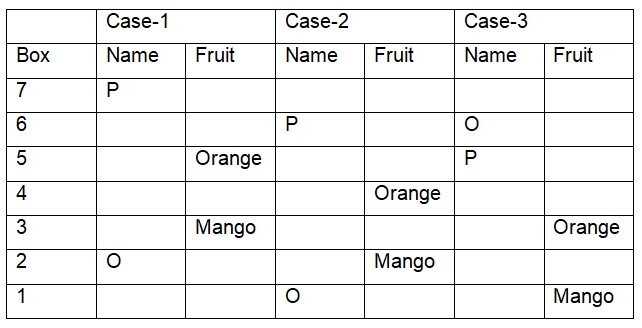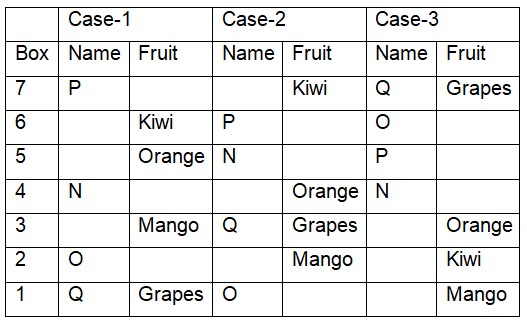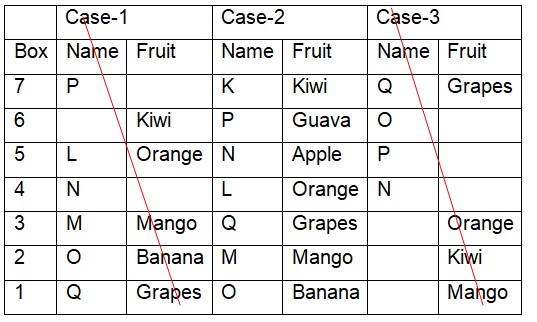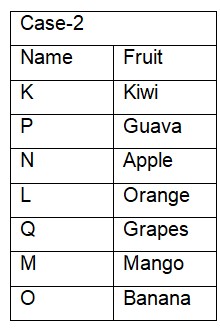Question
What is the position of the box with banana?
Answer the questions based on the information given below. Seven boxes viz. K, L, M, N, O, P and Q are filled with different fruits viz. Apple, Banana, Guava, Grapes, Orange, Mango and Kiwi are kept one above another in a stack. The box kept at the lowermost position is numbered as 1 and the box kept at the topmost position is numbered as 7. Box P is kept four boxes above the box with mango where the box with orange is kept exactly in the middle between them. Only two boxes are kept between the box with orange and box O which is not kept at the topmost position. As many boxes kept above box O as below the box with Kiwi which is kept two boxes away from box N. Box Q with grapes is kept at an odd numbered position. Box M is kept immediately above the box with banana and two boxes below box L. The box with apple is kept immediately below the box with guava.Solution
Box P is kept four boxes above the box with mango where the box with orange is kept exactly in the middle between them. Only two boxes are kept between the box with orange and box O which is not kept at the topmost position.  As many boxes kept above box O as below the box with Kiwi which is kept two boxes away from box N. Box Q with grapes is kept at an odd numbered position.
As many boxes kept above box O as below the box with Kiwi which is kept two boxes away from box N. Box Q with grapes is kept at an odd numbered position.  Box M is kept immediately above the box with banana and two boxes below box L. The box with apple is kept immediately below the box with guava. Hence, cases 1 and 3 get eliminated.
Box M is kept immediately above the box with banana and two boxes below box L. The box with apple is kept immediately below the box with guava. Hence, cases 1 and 3 get eliminated.  So final arrangement-
So final arrangement- 
Changes announced last week (A) / to information technology rules is (B) / expected to better aligned (C) / Big Tech's interpretation for (D)/ freed...
After the allegations , the CEO should step up from his position.
Find the error
When I called on her she did her home work
It was suggested (a)/ by the astrologer (b)/ that my grandmother should be taken care. (c)/ No Error (d)
Given below are sentences with an error in each. The error is in one part of the sentence. Below each sentence are given the options containing the par...
In the current phase of the pandemic, the INSACOG said (1)/the SARS-CoV-2 virus is continuously accumulating mutations, (2)/some of whom might contribut...
- Find out the error according to the grammar and context of the given sentences. If there is no error, mark option 5, i.e. No error. (Ignore the punctuation...
In each of the questions, a sentence is divided into five parts A, B, C, D and E in which two of the parts have some grammatical errors in them. You ha...
Judge in him (1) / prevailed upon the father (2) / and he sentenced his son to death. (3) / No error(4)
Antibiotics are useless (A)/and proprietary antiseptic gargles and lozenges (B)/if used in access are (C)/likely to further aggravate the throat (D).
Relevant for Exams:


